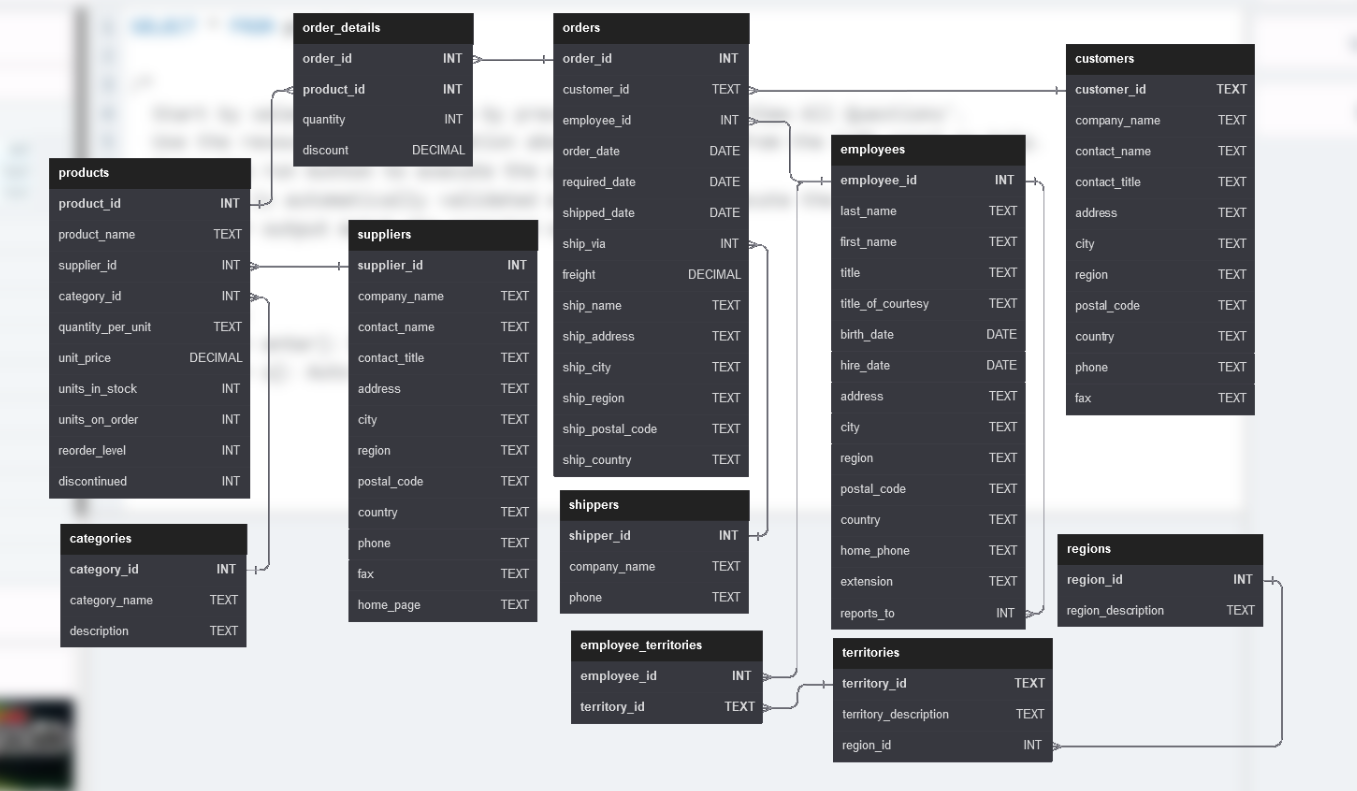Northwind Database
 Stephan Rhodes
Stephan Rhodes
To analyze a real world database like Northwind, we need to solve some of the most common problem that everyday database analysts are trying to solve. For example, an operation team needs data about how suppliers interact with products. They don't know if it make sense for single product to move to a single supplier. Some of the member of the operation team are new, thus they are looking for advice from a database analyst. Our job is to analyze the database for them.
The first thing we have to identify is all of the components of the database as well as their relationship between each other. This database has 11 entities which are also denoted as 11 tables. Most of the cardinality relationship is either 1-to-many and many-to-1 relationship. Some of the 1-to-many relationship comes from entities like supplier to product, product to order_details, order_details to order and so on...
Thus for the operation team to be able to do their quarterly report they need to understand these different kind of cardinal relationship.
Here is an example of 4 entities link with few many-to-1 relationship
Table order_details{
order_id integer [pk]
product_id integer [ref: > products.product_id]
quantity integer
discount decimal
}
Table products{
product_id integer [pk]
product_name text
supplier_id integer [ref: > suppliers.supplier_id]
category_id integer
quantity_per_unit text
unit_price decimal
units_in_stock integer
units_on_order int
reorder_level integer
discontinued integer
}
Table suppliers{
supplier_id integer [pk]
company_name text
contact_name text
contact_title text
address text
city text
region text
postal_code text
country text
phone text
fax text
home_page text
}
Table orders{
order_id integer [ref: < order_details.order_id]
customer_id text
employee_id integer
order_date date
required_date date
shipped_date date
ship_via integer
freight decimal
ship_name text
ship_address text
ship_city text
ship_region text
ship_postal_code text
ship_country text
}
Open this database design on a new page
One of the line of code involving "ref" is the one that create relationship between table. I'll explain what it does on the next article but basically there are 4 different ways to write this code involving the "ref" term.
Subscribe to my newsletter
Read articles from Stephan Rhodes directly inside your inbox. Subscribe to the newsletter, and don't miss out.
Written by
